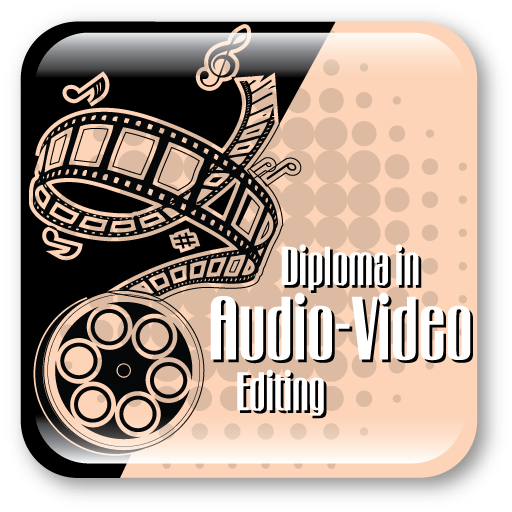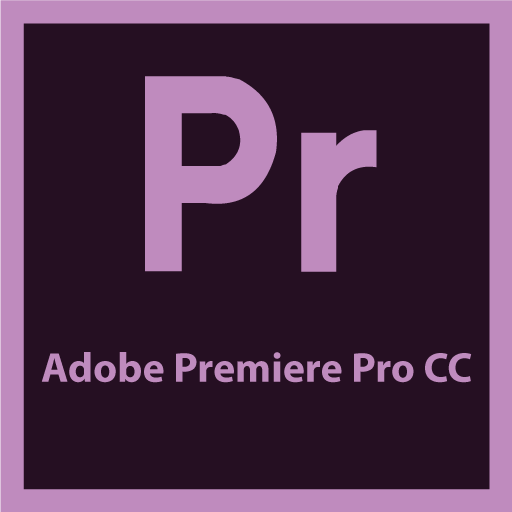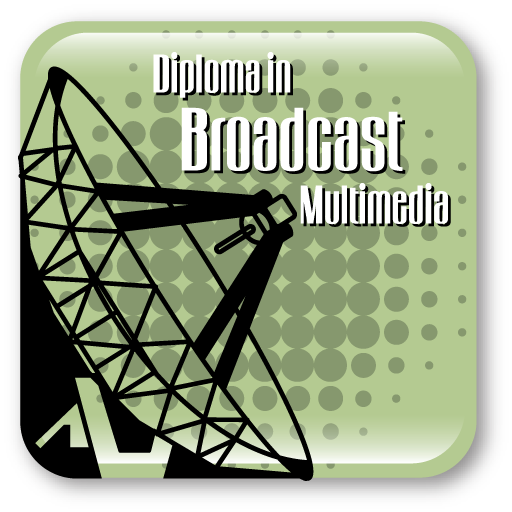Who uses Audio-Video Editing?
Adobe Premiere Pro is mainly used for video editing by Broadcasters, Editors,
Feature Film Editors, Animators and many others. Whether you’re creating a documentary, editing a commercial, or need to add visual effects to your video project you can do so using Adobe Premiere Pro.
Adobe Audition is an application used by audio and video professionals to record, edit, mix, and restore audio compositions. Audio and video professionals use Audition for visually fixing audio problems like noise and clicks using healing tools, mixing multiple tracks of dialog, music, and sound effects, enhancing the quality of audio by utilizing built-in audio effects, and also adjusting multiple audio clips simultaneously by using Batch Processing Commands.
Course Overview
Video creation with Adobe Premiere Pro CC
Touring Adobe Premiere Pro Creative Cloud
In this lesson, you’ll learn about the following:
- What’s new in Adobe Premiere Pro
- Nonlinear editing in Adobe Premiere Pro
- Standard digital video workflow
- Enhancing the workflow with high-level features
- Incorporating Adobe® Creative Cloud® into your workflow
- The Adobe Creative Cloud workflow
- The Adobe Premiere Pro workspace
- Customizing your workspace
Setting up a Project
In this lesson, you’ll learn how to choose project settings, video rendering and playback settings, video and audio display settings, capture format settings, creating scratch disks, using sequence presets and customizing sequence settings.
Importing Media
In this lesson, you’ll learn how to use the Media Browser to load video files, Import command to load graphic files, how to choose where to place cache files and Capturing from tape.
Organizing Media
In this lesson, you’ll learn about using the Project panel, staying organized with bins, adding metadata to your clips, using essential playback controls, interpreting footage and making changes to your clips
Essentials of Video Editing
In this lesson, you’ll learn about working with clips in the Source Monitor, creating sequences, using essential editing commands and understanding tracks.
Working with Clips and Markers
In this lesson, you’ll learn about comparing Program Monitor with the Source Monitor, using markers, applying sync locks and track locks, selecting items in a sequence, moving clips in a sequence and removing clips from a sequence.
Adding Transitions
In this lesson, you’ll learn about understanding transitions, understanding edit points and handles, adding video transitions, modifying transitions, fine-tuning transitions, applying transitions to multiple clips at once and using audio transitions.
Advanced Editing Techniques
In this lesson, you’ll learn about performing a four-point edit, changing the speed or duration of clips in your Timeline, replacing a clip in your Timeline with a new shot, permanently replacing footage in a project, creating a nested sequence, performing basic trimming on media to refine edits, implementing slip and slide edits to refine your clips’ position or content and dynamically trimming media using keyboard shortcuts.
Putting Clips in Motion
In this lesson, you’ll learn about adjusting the Motion effect for clips, changing clip size and adding rotation, adjusting the anchor point to refine rotation, working with key-frame interpolation and enhancing motion with shadows and beveled edges.
Multi-camera Editing
In this lesson, you’ll learn about synchronizing clips based on audio, adding clips to a sequence, creating a multi-camera target sequence, switching between multiple cameras, recording a multi-camera edit and finalizing a multi-camera editing project.
Editing and Mixing Audio
In this lesson, you’ll learn about working in the Audio workspace, understanding audio characteristics, adjusting clip audio volume, adjusting audio levels in a sequence and using Audio Clip Mixer and Audio Track Mixer.
Sweetening Sound
In this lesson, you’ll learn about sweetening sound with audio effects, adjusting equalization (EQ), applying effects in the Audio Track Mixer and cleaning up noisy audio.
Adding Video Effects
In this lesson, you’ll learn about working with fixed effects, browsing effects with the Effects Browser, applying and removing effects, using effects presets, using keyframing effects and exploring frequently used effects.
Color Correction and Grading
In this lesson, you’ll learn about working in the Color Correction workspace, using vectorscopes and waveforms, using color correction effects, fixing exposure and color balance problems, working with special effects and creating a look.
Exploring Compositing Techniques
In this lesson, you’ll learn about using the alpha channel, using compositing techniques, working with opacity, working with a greenscreen and using mattes.
Creating Titles
In this lesson, you’ll learn about using the Titler window, working with video typography, creating titles, stylizing text, working with shapes and logos, making text roll and crawl and working with templates
Managing Your Projects
In this lesson, you’ll learn about working in the Project Manager, importing projects, managing collaboration and managing your hard drives
Exporting Frames, Clips, and Sequences
In this lesson, you’ll learn about choosing the right export options, exporting single frames, creating movie, image sequence & audio files, using Adobe Media Encoder, exporting to Final Cut Pro, exporting to Avid Media Composer, working with edit decision lists and recording to tape.
Enhancing Audio with Adobe Audition
Audio Interfacing
Before you can use Audition, you need to configure your computer and audio system to work with the program. This lesson covers audio interfacing for Mac and Windows computers.
The Audition Environment
You can create custom workspaces with particular selections of windows and window arrangements, as well as choose various ways to navigate through Audition’s Waveform Editor and Multitrack Editor.
Basic Editing
Audition makes it easy to cut, paste, copy, trim, fade, and perform other processes on audio files. Learn how to zoom in to make extremely precise edits, while seeing a zoomed-out version in the overview window at the top.
Signal Processing
Learn to use the signal processors to “sweeten” the audio in multiple ways: fix tonal balance, alter dynamics and add ambience or special effects, and much more. Draw from the extensive collection of effects included in Audition, or use third-party plug-in processors.
Audio Restoration
Audition offers tools for reducing hiss, hum, clicks, pops and other types of noise. Learn to remove undesired artifacts by defining sections to be removed based on amplitude, time and frequency.
Mastering
Mastering is the stage between mixing and distribution. By tasteful application of EQ, dynamics, waveform editing, widening, and other techniques learn how to shape a piece of music into a refined audio experience that’s ready for distribution or posting online.
Sound Design
With Audition’s array of signal processors, learn to modify common, everyday sounds into something completely different like transforming a wall fan into a spaceship’s engine room or a running faucet into crickets at night.
Creating and Recording Files
Not only can you record audio into Audition’s Waveform Editor or Multitrack Editor, you can also extract audio from standard Red Book Compact Discs or drag files from the desktop directly into either Audition Editor.
Multitrack Editor Orientation
Learn how to use the Multitrack Editor to assemble clips, add effects, change levels and panning, and create buses for routing tracks to various effects.
The Multitrack Mixer View
Learn to use Mixer view which is optimized for mixing rather than editing the multitrack project’s tracks.
Editing Clips
Learn to apply a variety of operations to individual clips, including combining them with crossfading to create a perfect DJ-style continuous mix of music. Also learn to bounce the mix to a single file suitable for exporting, burning to CD, uploading to the web, and so on.
Creating Music with Sound Libraries
Using commercially available sound libraries and Audition’s Multitrack Editor, Learn to create music easily for commercials and audio for video, kiosks and other applications.
Recording in the Multitrack Editor
In addition to simply recording into a track in the Multitrack Editor, Learn to punch over mistakes and assemble multiple takes into an idealized and composite take.
Automation
Audition can remember parameter changes you make in a Multitrack Session and store those changes as part of the Session file. Whether those changes are performed in real time as control movements or created and edited in non-real time. Learn how these automation processes apply to individual clips or complete tracks.
Mixing
Creating a mix is an art and a science. Audition’s Mixer view combined with automation, long-throw faders, the ability to detach the mixer and “float” it on another monitor and various other crucial tools help create the mix. Learn to save it in a variety of file formats (including MP3 for uploading to the web), as well as burn an audio CD of the final stereo mix.
Scoring Audio to Video
Learn how Audition can load video preview files; when composing soundtracks or adding dialogue, the video window provides a crucially important reference.
Check out our sample video tutorials



